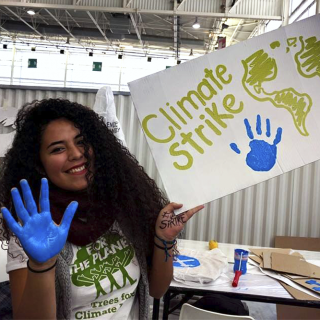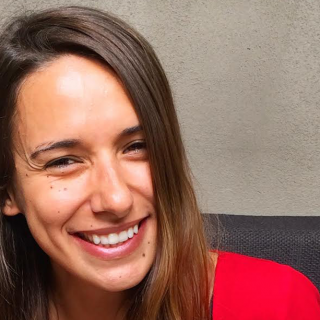What do the trees, insects, and cultural traditions of the Amazon have to do with blockchain and DNA sequencing? Everything, according to a group of international scientists proposing a new way to save the world’s largest rainforest.
Their idea was triggered by the 2016 study, “Land-use and climate change risks in the Amazon and the need of a novel sustainable development paradigm,” published in the scientific journal PNAS (Proceedings of the National Academy of Sciences of the United States of America), which found that rising temperatures and deforestation in the region could lead the forest to an irreversible “savannization” point (that is, turn the climate of the rainforest into that of a savanna). To avoid this scenario, the study’s authors propose an approach to sustainable development combining advanced technology with traditional knowledge, exploring how the forest’s biodiversity can be protected, yet also become a profitable source of products, services and experiences bringing income to the Amazon’s indigenous peoples.
But how to put this idea into practice? To answer this and other questions about the project, now called Banco de Códigos da Amazônia (Amazon Database), with partners such as the World Economic Forum, Believe.Earth spoke with the study’s lead author, the Brazilian scientist Carlos Nobre, who also co-authored the Fourth Assessment Report of the Intergovernmental Panel on Climate Change (IPCC), which received the Nobel Peace Prize in 2010.
BE – According to your research, what may happen to the Amazon?
CN – The Amazon Rainforest may disappear or be cut back in some areas. As deforestation and loss of biodiversity continue, the risks of these irreversible changes in the forest will increase. An increase of 4°C (39.2°F) or deforestation above 40 percent of the forest area [the region has warmed by 1°C (33.8°F) in the last 60 years and deforestation is reaching 20 percent] will lead the Amazon to a critical point.
Believe.Earth (BE) – Why haven’t we found an efficient way to save it?
Carlos Nobre (CN) – What we’ve seen so far are two approaches to the Amazon that do not work. The first is to look at the rainforest simply as a place to be preserved, with no economic activity. The second one, responsible for deforestation, is to see the Amazon simply as a source of commodities [meat and soybeans, for example], natural resources [wood and ore] and energy, with hydroelectric plants. These two approaches clash all the time, and trying to align them is definitely not working.
BE – What’s the answer?
CN – Our idea is to create a third way, using cutting-edge technology as the basis for a new model of sustainable development in the Amazon Rainforest. A path with an economic bias, since it must be more profitable than livestock, but which is based on preserving the forest and valuing the assets of biodiversity. So, we must take into account that we are in the century of knowledge. Thus, instead of adding value to natural resources or commodities, we must use the huge potential for knowledge that is already present throughout the forest.
BE – What kind of technology are we talking about?
CN – The increasingly accessible use of genetics, nanotechnology, artificial intelligence, the ‘internet of things’, blockchain [a shared database of linked, encrypted records] among others. All of them, of course, can be used to serve the indigenous peoples’ needs.

The scientist in the Cuieiras Ecological Reserve, 100 kilometers from Manaus, at the National Institute of Amazonian Research (INPA) (Photo: Volvo Environment Prize 2016)
BE – How are you using these technologies in the Amazon Rainforest right now?
CN – We’ve started by using simpler technologies to develop products with high added value that attract larger markets, beginning with the rest of Brazil, and then expanding globally. I’m not just talking about producing the raw material but adding value in the same way that happened with the açaí, which has a world market that moves billions nowadays. If that market has the potential to grow even more, with the commercialization of the oil from the açaí seed and its palm heart, we should think about the potential of the rest of the forest. It is endless. Few of these products currently have market value. But we can change that. And this is done by investing in science and technology to analyze biodiversity, identify potential products, develop them, improve production chains, create strategies for them to reach markets and generate income.
BE – How would this whole process work?
CN – Basically, with the creation of creative laboratories within the Amazon Rainforest. Something different from what happens nowadays, where the forest is only the supplier of primary products. We can bring technologies to the forest, empowering communities, involving residents of small towns, riverside populations, indigenous groups and local universities. And to prove that innovation can reach such places, let’s think about the cell phone – a technology previously considered inaccessible that is used by all these people today.
BE – At what stage is the implementation of this plan and how will the laboratories work?
CN – We are looking for resources, since each of them costs about US$ 200,000 to set up, not considering the operational cost. We already have some pilot studies. These laboratories will be places to develop new products drawing on the forest’s biodiversity and with differentials for the market. The laboratories will also improve the production chain. Everything always together with the community, in an environment of much information exchange. We will not be imposing predefined ideas. The first thing is to observe what the community needs. Our project is also powered by the spirit of innovation of local students, startups and the private sector.
These technology and bioindustries centers will generate income without destroying the forest and have the potential to be much stronger than the current economy, which is not sustainable, since it is based on the depletion of natural resources.
BE – What other examples exist besides açaí?
CN – There’s a substance called spilanthol, which is found in jambu [a common plant found in the Amazon], and has been used in several toothpastes, anti-inflammatory, anesthetic and anti-wrinkle products. Essential oils such as copaiba, much collected throughout the region, and nhandiroba can be used in many medicines and cosmetics. The bacuri [Amazonian fruit] can be used to make ice cream.
BE – How can we ensure that the income from these products, processed for the world market, goes back to those who harvested them? Would these laboratories provide an alternative to the current system, which deprives the people who hold the traditional knowledge of the forest from enjoying a fair share in its profits?
CN – You’re right. It’s obvious we have made some progress on this matter in Brazil. In the struggle for the creation of the Nagoya Protocol [international agreement regulating trade between the countries providing genetic resources and those that use them], Brazil played an important role. We also must refer to the Brazilian Biodiversity Law, which is positive in terms of argument. But in practice, we haven’t yet discovered a mechanism for compensating traditional communities fairly. This law, besides bureaucratizing the process excessively, ended up directing a very small part of the profits, at most 1 percent, as a distribution of benefits. And in my opinion, traditional knowledge has a much higher value than that.
With açaí, only 15 percent of the value from the whole chain ends up in the producer’s hands. Some countries have potential as suppliers of biodiversity and I don’t believe others should be able to simply take advantage of these assets. Hence the need to create these biotechnology industries in Brazil and especially in the Amazon.
BE – Your project, which came from the scientific paper published in PNAS, was later renamed Amazonia Database. Why?
CN – Besides the laboratories and biomimetic research [read below], there’s also a plan to develop a public digital platform to record and map the genome of all species in the Amazon Rainforest. We know that genomic knowledge will have a high economic potential in the future. So, it will be stored in the blockchain. Each country from the Amazon Basin will register the genetic sequencing of its species, creating a reserve of knowledge.
BE – What information will be stored in this database?
CN – The origin, rights and obligations associated with that asset to track its use. Any person who wants to use this information pays some royalties to the country that deposited it [through a computer protocol called a “smart contract”], facilitating the fair division of benefits for those who hold traditional resources and knowledge. This would also work to curb biopiracy and as an incentive for Amazonian countries to preserve the forest and its biodiversity.
BE – You say that Brazil must find the ambition to be the first developed tropical country in the world, with its own model, and that one of the ways to achieve this is through scientific and technological prowess. Why is that essential?
CN – In developed countries, much of their advancement comes from their ability to industrialize. That is why I advocate a joint effort of the public and private sectors, scholars and, of course, indigenous people. Only then we can protect the Amazon Rainforest.
This content is promoted in partnership with Instituto Socioambiental (ISA) and Greenpeace.
Published on 04/26/2018





